On a cool misty November day, we drove into the Hillwood Estate and Garden car park and were soon registered at the Visitor Centre. The Estate is not a massive tract of land, but it is filled with many treasures, both in the house and in the garden. Outbuildings also house many treasures.
Although we wanted to visit the house, my interest for this story and generally, of course, as a horticulturist, was the garden! The garden was principally designed by renowned American landscape architect Perry Hunt Wheeler.
Hillwood was once one of the homes of Marjorie Merriweather Post, an American heiress who loved French and Russian art. It is a grand estate set in Washington, D.C.. Friends, now resident in West Virginia near D.C., Hennie and Elna took us there, as they wanted us to see the extensive art collection and explore the gardens.
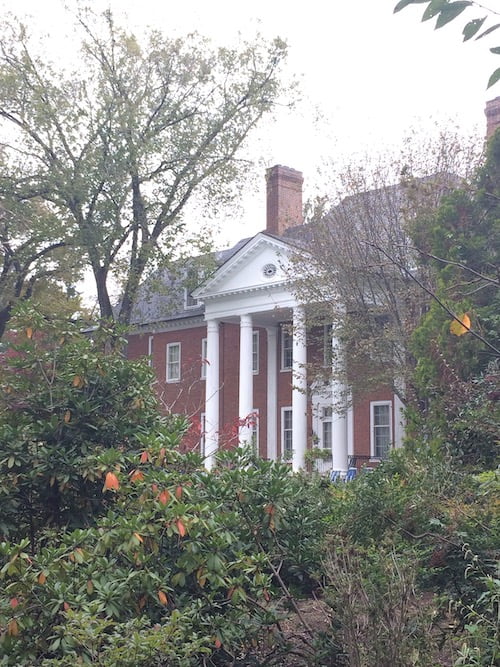
Back of House, Facing Lunar Lawn. Image, Edward Ohanessian
Visitors are encouraged to first watch a film about the estate and art collection, before looking around the garden or actually visiting the house. Oddly, because of the slope of the land, you had to go upstairs and around the back to exit the Visitor Centre and begin the journey to the main house. Standing alongside the Visitor Centre, the charming restored Victorian-style glass house contains a large collection of exotic orchids and tropical plants.
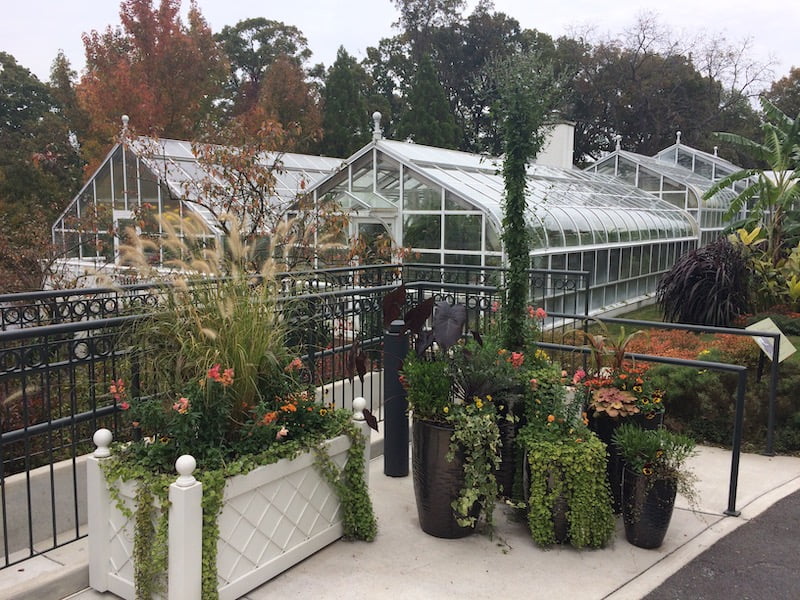
Hillwood Glasshouses. Image, Edward Ohanessian
The main house is Georgian in style, with classical statues placed at focal points around the entrance. The aptly named Motor Court, at the front of the house, was styled for the season with ribbons of copper, yellow and russet chrysanthemums and walls covered in espaliered cotoneasters, richly displaying garnet-like berries.
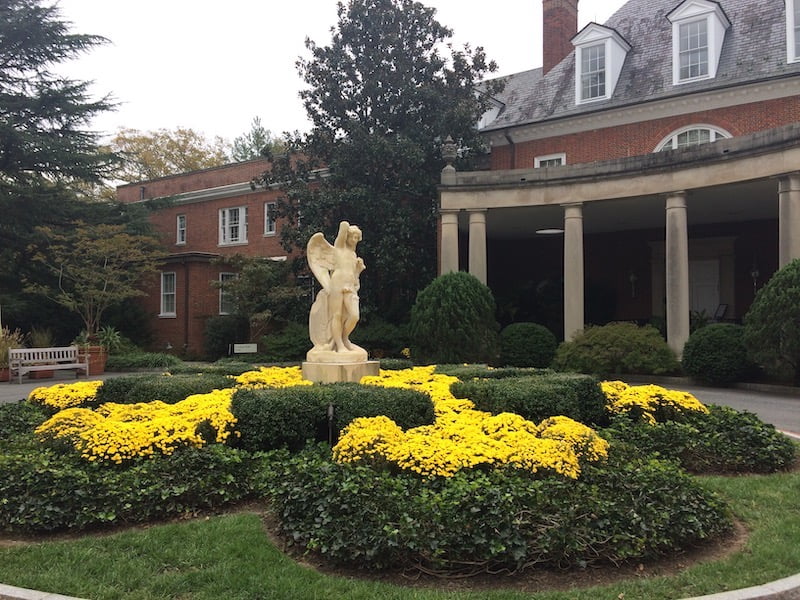
Motor Court, Main House Entrance. Image
There were also lots of azaleas, several dogwoods, pieris, and hosta, around the front of the house, and then, to the right, there was a path lined with azaleas, inviting the visitor to explore deeper into the garden.
This main garden path, embraced by these banks of azaleas, leads down to the rose garden. Here, at the highest point, there is a loggia, covered by mature wisteria, colouring yellow for Autumn/Fall. For the time of year, we were surprised at how many roses were still flowering. Each section of the rosière is planted with a different cultivar. The style of the garden was formal, with sections filled with various cultivars, with an emphasis in white and apricot roses; Post favourites.
There is a granite column at the centre of the rose garden, which gives great focus. The column is topped by an antique urn made from rare purple porphyry. It’s under here that Post’s ashes are laid and fresh flowers are still arranged there, even today, in her memory.
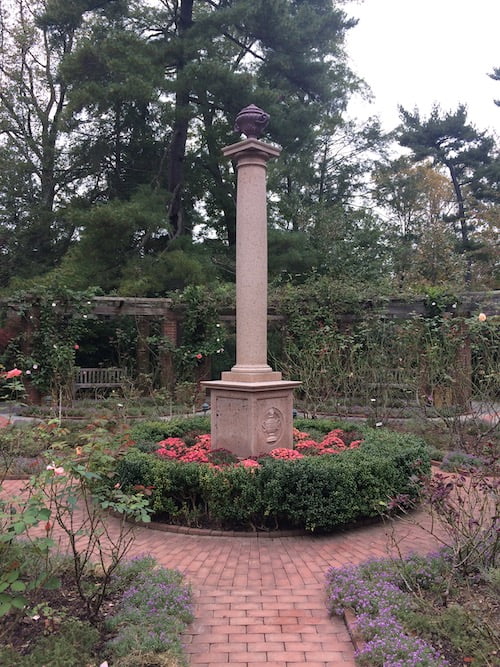
Column at Rose Garden Centre. Image, Edward Ohanessian
From here, walking through a door (a little Alice in Wonderland), in a high brick wall, we went into The Parterre garden, just outside the formal sitting room. A giant marble statue of Diana the Huntress stands at the far end of this garden from the house, a curtain of giant ivy draped behind her for theatrical effect.
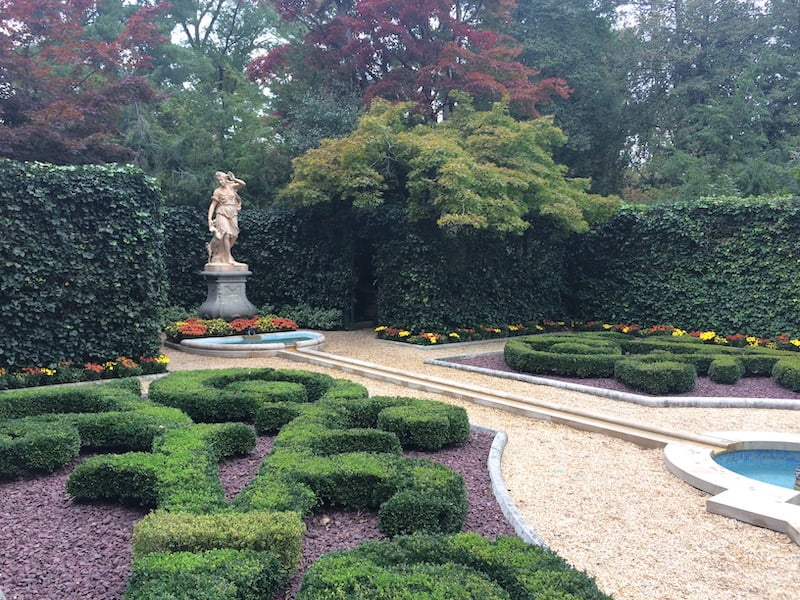
Parterre Garden. Image, Edward Ohanessian
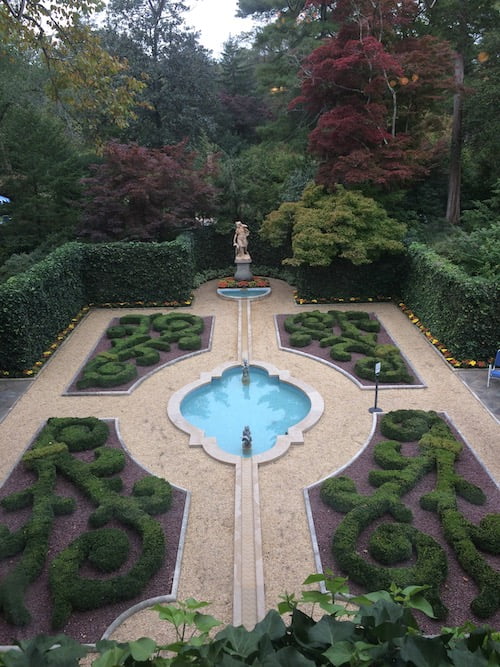
View of French Parterre From Top Floor. Image, Edward Ohanessian
This garden has a central water feature, with a rill that runs from a bas-relief swan fountain attached to the house, through an ornamental pool, decorated with bronze cupid spouts, and toward the grand statue of Diana. Against the left-hand wall of the house an espaliered evergreen magnolia is a luxuriant feature.
The curtain of ivy covers most of the walls. At the base of the walls and around the grand statue, variegated shrubs and chrysanthemums add autumnal colour and cheer.
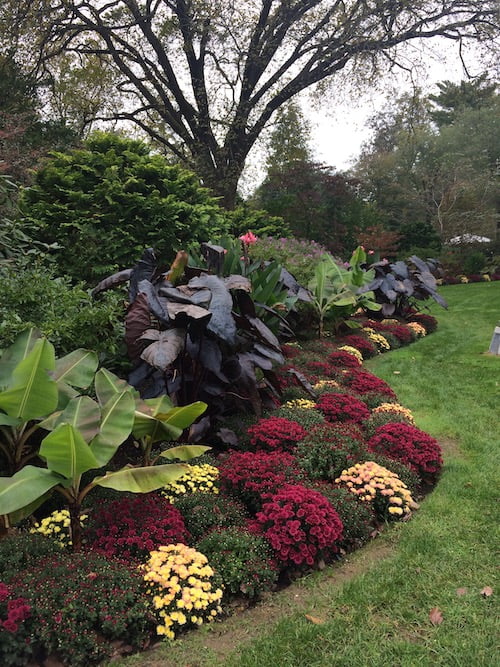
Dwarf Chrysanthemum in Lunar Lawn in Border. Image, Edward Ohanessian
There are four formal beds with flowing knot-style buxus swirls in each. There is no other planting, just a dark red ragged gravel. The effect is nonetheless impressive, crisp and textural.
At the other end of the garden, another door takes you to the front garden called The Lunar Lawn because of its shape, with a pair of delicate marble sphinx guarding the entrance. There are colourful perennial borders, which frame, in a semi-circle fashion, a sweeping green lawn. I actually found these borders a little messy, but it could have been the time of year.
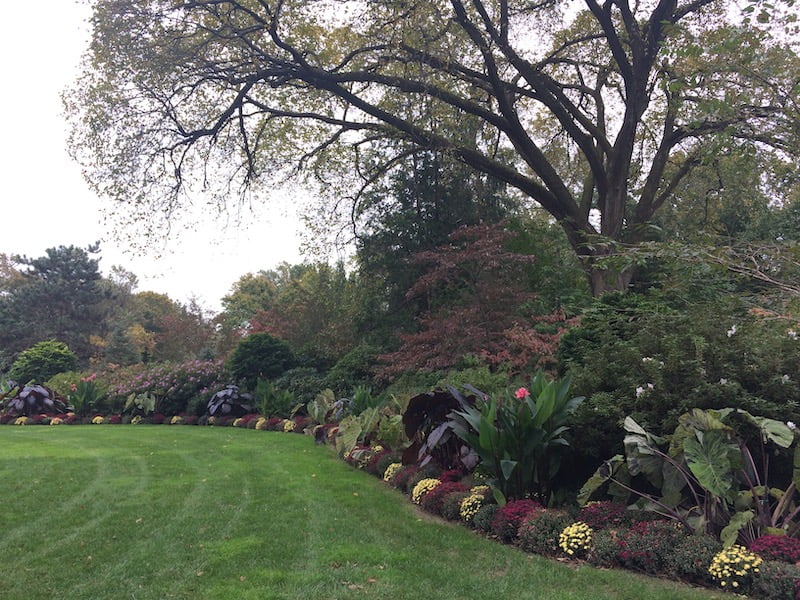
Lunar Lawn with Perennial Border. Image, Edward Ohanessian
Below the garden beds there are paths to several destinations. One leads to The Friendship Walk, installed by many of Mrs. Post’s friends, during her lifetime, as a surprise to honour her philanthropic work.
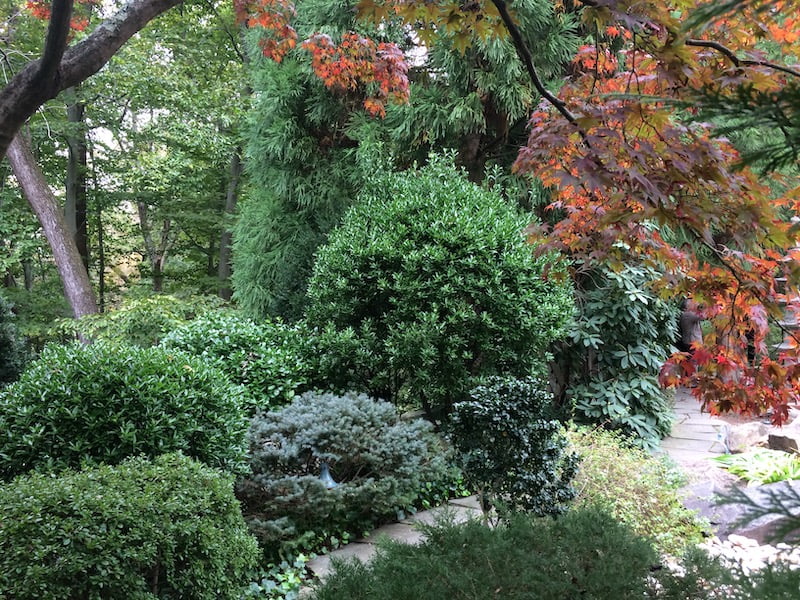
Friendship Walk Garden. Image, Edward Ohanessian
Another path leads to a pet cemetery area, with myriad stone sculptures, mainly of family dogs. Another leads to the nearby Japanese Garden, already obvious aurally, because of the thunderous sound if its water feature.
There is also a traditional brightly coloured Russian house in this area, too. Surprisingly, with so much variation in such a small place, the areas do not seem jumbled or crowded. The planting cordons each area off from each other, creating garden rooms.
Before entering the Japanese Garden, there is a magnificent view down the final lawn. Beyond, framed by trees, standing in the distance, the Washington Monument can be seen reaching for the sky. While gazing at the view we met Brian Barr, the Hillwood Director of Horticulture. He was happy to chat about the garden. He told us he was responsible for the re-covering of the odd blue chairs throughout the garden. Importantly, however, they are true to how they were during Marjorie Post’s time.
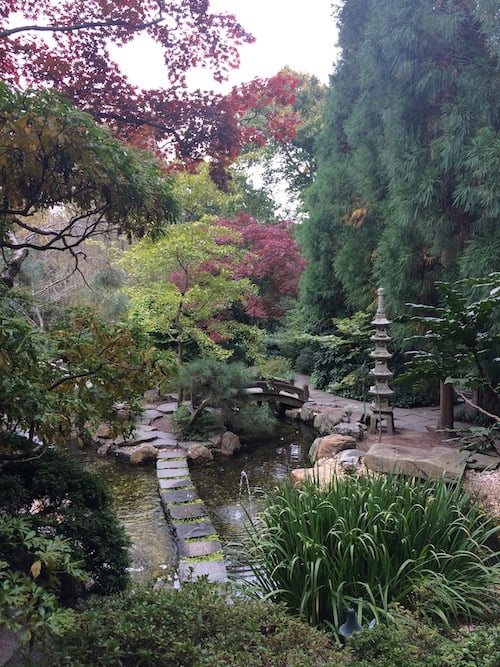
Japanese Garden. Image, Edward Ohanessian
The lovely Japanese Garden is to the right of this wilder area. It has all the features one would expect, including curving timber bridges, lanterns, and stepping-stones floating on the water through the top pond. Oriental-style bronze fish spout jets of water into the ponds, adding movement and noise “texture”.
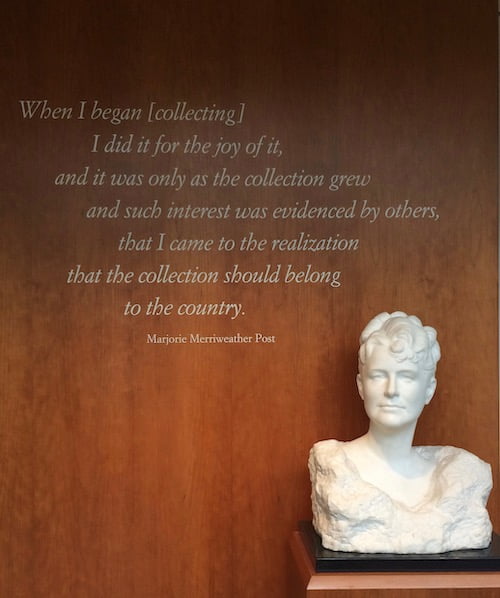
At Reception. Edward Ohanessian
One of the most attractive features of the garden is that it was owned by someone who loved plants and flowers. I have visited other garden estates in the US. These are the victims of what I call chequebook gardening. If you have enough money you can have someone design, build and maintain a garden to impress. What makes Hillwood so charming is that it has a soul, because Marjorie Post was involved in the process of planting the garden and deciding how it would look. Hillwood is definitely worth a visit, the house and its treasures as well, if you are in Washington, D.C. area. The garden would be of interest at any time of year.
